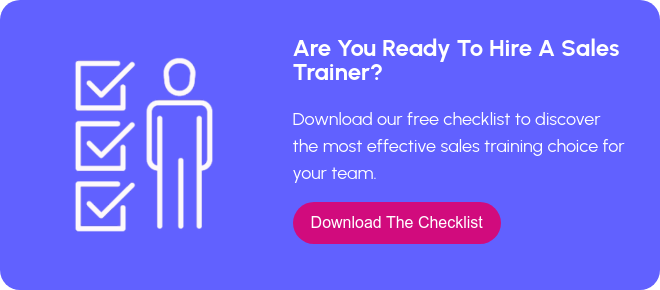Assess Your Features From Your Customers’ Perspective
How many times have you been pitched to or sat in a meeting with someone blathering on about the features and benefits of their products? I say blathering because that’s what it feels like when someone is sitting in front of you talking about their product, their features and what they believe are the benefits.
It feels like a pretty one-sided conversation, one size fits all—from only their perspective, right?
Features are intrinsic to the product. But benefits, are intrinsic to the user or consumer.
I feel annoyed in these situations because the sales person is assuming what my priorities are, what I value, and what’s most important to me. How often do we get it right if we assume everyone has the same value systems?
Not often. And if this sounds like you and how you’ve been selling, it could be seriously putting off your customers and handicapping your results.
To connect strongly with your customers, build a more flexible sales process—one that accounts for varying perspectives, influences, and values.
Over the next few posts, we’ll share our formula for creating strategic selling tools that profoundly speak to your customers.
Assess Your Features From Your Customers’ Perspective
Start with asking questions about your product or solutions’ features and how they’re relevant to buyer benefits. Stay focused on the customer’s varied perspectives and be open to differing values—not broad marketing messages.
Take each product or offering and drill down as deep as you can, exhausting all the answers. It may seem redundant, but in this process, you’ll
- look at the benefits you offer from multiple angles
- ingrain this process in the way you think and speak about your products.
From your customer’s perspective, what are all the possible ways they could answer these questions:
Who needs this product or solution?
Example:
- Industry: Healthcare
- Market: Rehabilitation Facilities
- Business Size: 100+ beds
- Geography, Competitive Conditions: 2nd tier markets, 10+ year old facilities with multiple competitors in the market”
Why do they need it?
Example:
- To Achieve Competitive Advantage
- Increase Productivity
- To Achieve Cost Savings
What problems does it solve for them? Be specific!
Example:
- Eliminates two labor-intensive steps in the production process
- Allows sales reps to quickly access customized demos on tablets
Who are the people/users/departments in an organization that are impacted by implementing my solution? Then, ask the same question about who is not impacted.
Example:
- Marketing Managers, Sales Executives, Customer Service Managers
What do they care about?
Example:
- Marketing Managers: consistent messaging and lead generation through digital channels
- Sales Executives: qualified leads that close quickly and get them to quota
- Customer Service Managers: high scores and quick resolution to problems.
Who are they currently using?
Example:
- Known competitors, XYZ Company’s Premium Ultimate Solution
What could be pain points with existing vendors/solutions or lack of solution?
Example:
- Frequently out of stock
- PO’s and invoices are constantly incorrect
- Service is lacking – can never reach sales rep
Why would they switch?
Example:
- Cost savings can offset upgrade costs for other capital investments
- Increase in productivity can turn over product quicker
Be Prepared to Sell to Your Customer's Unique Value
If you’ve struggled to answer many or all of these questions, perhaps you’ve been presenting your offering from only your own perspective – and it’s been too narrow. Combine many potential answers for each question and allow for the unknown as well.
If you need more perspective, interview your current customers and ask them these questions. If you’re a small business, bring your whole team in to get their perspectives too. Test and revise often so you’re continually reflecting your customer’s context and values.
.webp?width=12693&height=4513&name=Sauce%20Logo%20Dark%20Ht%20(1).webp)

.webp?width=180&height=64&name=Sauce%20Logo%20Dark%20Ht%20(1).webp)











